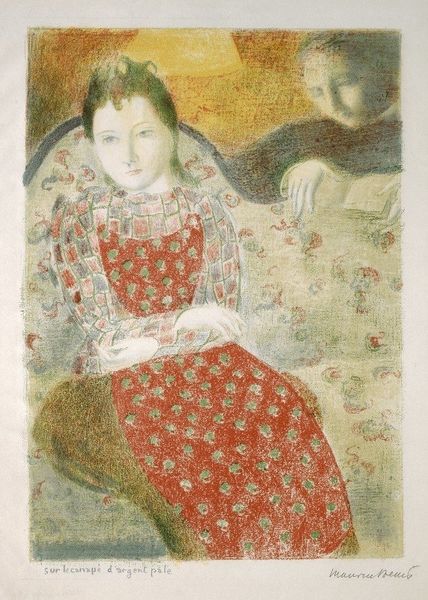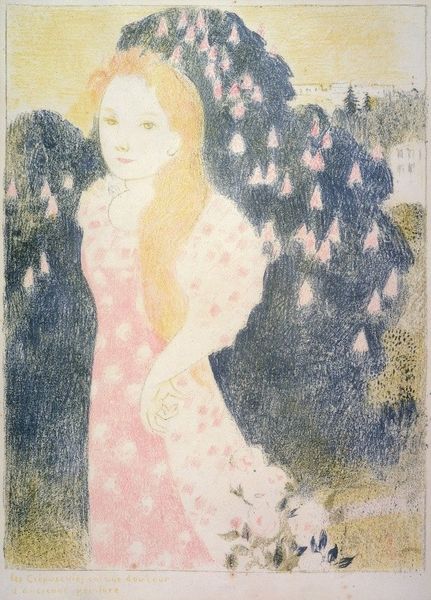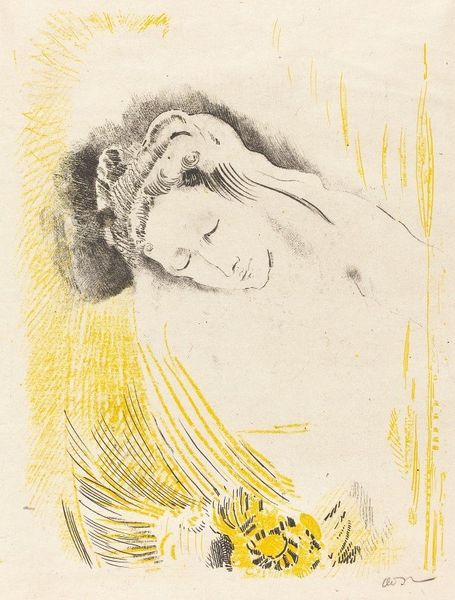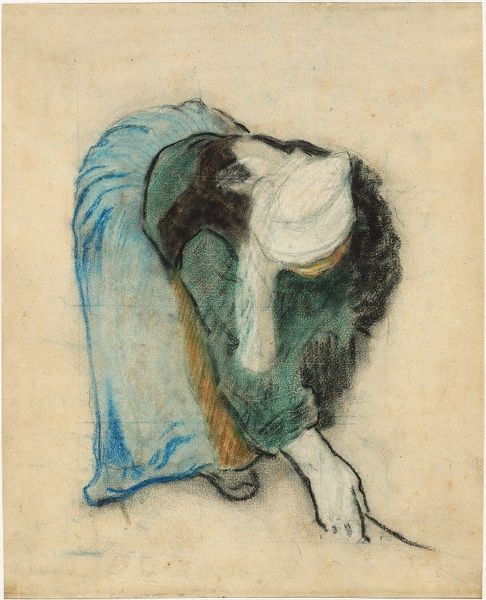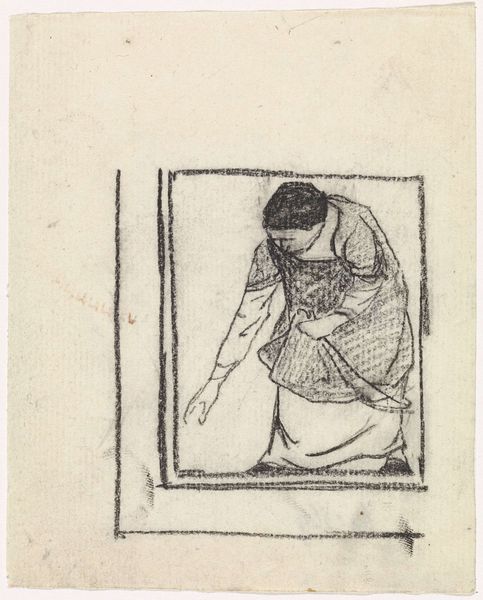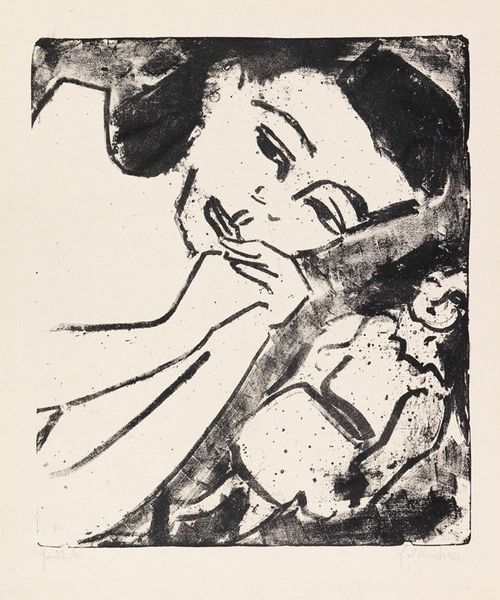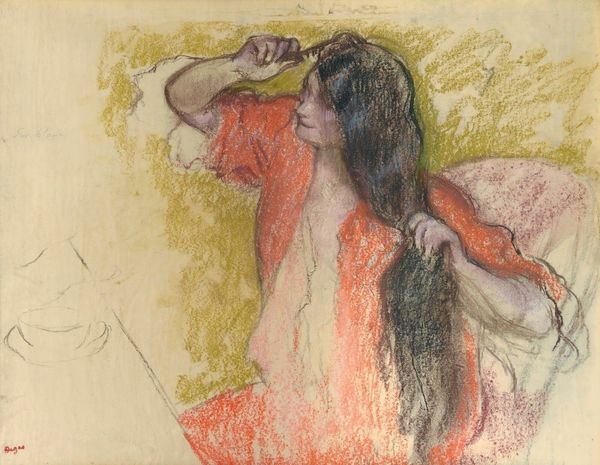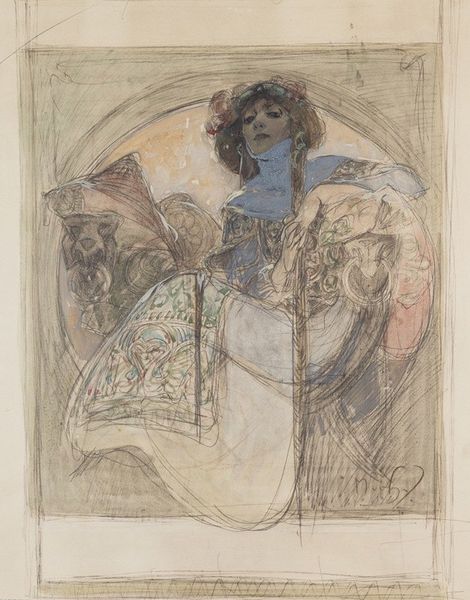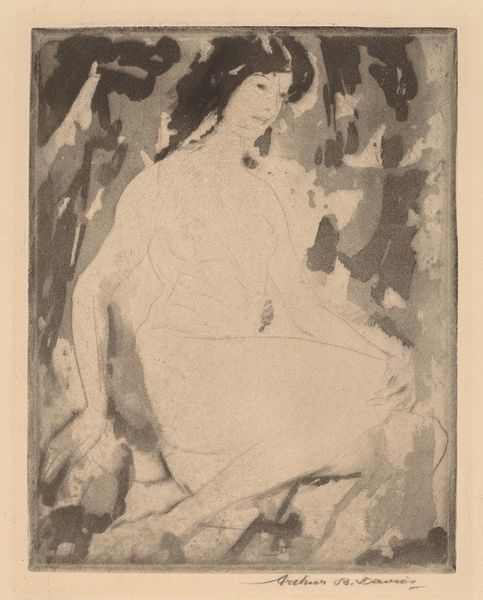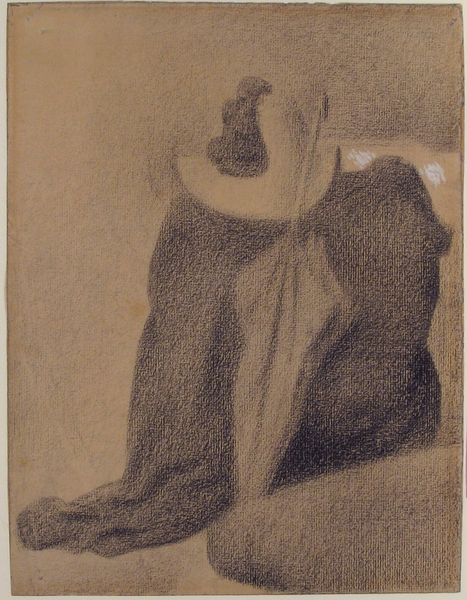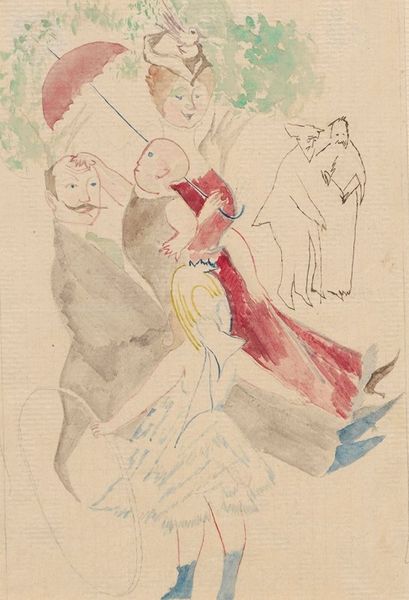
lithograph, print, paper
#
portrait
#
lithograph
# print
#
figuration
#
paper
#
intimism
#
les-nabis
#
france
#
symbolism
Dimensions: 16 x 11 5/16 in. (40.64 x 28.73 cm) (image)20 7/8 x 16 1/16 in. (53.02 x 40.8 cm) (sheet)
Copyright: No Copyright - United States
Editor: Maurice Denis's "On the Pale Silver Sofa," made between 1892 and 1899, a lithograph on paper... It has a very intimate and quiet atmosphere. I'm drawn to the materiality of it; you can almost feel the texture of the fabric. What catches your eye about this print? Curator: For me, it's the way Denis elevates a commonplace domestic scene to high art by using industrial techniques. Lithography, a process involving a flat stone or metal plate, democratized image-making, moving it away from exclusive, handcrafted methods. Does this shift impact the work's accessibility? Editor: Definitely. The printmaking process allows for wider distribution, bringing art to a larger audience than, say, a unique oil painting. How does that tie into the art world's social context? Curator: Precisely. Consider the rise of the middle class during this time and their increased consumption of art and decorative objects. Printmaking enabled artists like Denis to tap into this growing market and to challenge conventional notions of fine art. The work depicts figures on a sofa, the paper texture itself becomes part of the "scene". Editor: So, it’s not just about *what* is depicted, but *how* it was made, reflecting the changing dynamics of production and consumption? Curator: Exactly. The labor involved in creating a lithograph—the stone preparation, the printing process—contributes to our understanding of the work as a product of specific material conditions and social forces. Consider that most other art made on paper used pen, ink or paint and see if lithography adds value. Editor: That makes me rethink my initial perception. I was focused on the mood, but now I see it as a commentary on artistic production itself. It’s clever, isn’t it? Curator: Indeed. It reminds us to question the boundaries we often impose on art and to appreciate the artistic merit found in unexpected places. It really opens the viewer to look and to think, doesn't it?
Comments
No comments
Be the first to comment and join the conversation on the ultimate creative platform.
